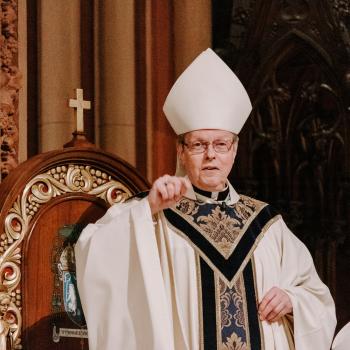A battle of political wills over Oklahoma’s secretive lethal-injection protocol turned into a gruesome scene of macabre theater Tuesday evening, as the state botched the execution of one inmate and halted that of another scheduled later in the night.
The mishandling reflects the extraordinary and surreptitious lengths a handful of active death-penalty states are now willing to go to in order to continue their executions, capital-punishment opponents say, and represents just the latest episode in a string of disturbing events on Oklahoma’s death row in recent months.
Moreover, Oklahoma’s ongoing morass is a symptom of a national death-penalty system in crisis, a system that is finding it increasingly difficult to procure the drugs necessary to carry out death sentences amid boycotts from European manufacturers and reticence from licensed physicians.
At first, everything seemed to be going normally Tuesday night. Clayton Lockett was declared unconscious 10 minutes after being injected with the first dose of a new, untested three-drug cocktail, according to witness reports. But minutes later, he awoke and began breathing heavily, and, still strapped to the gurney, started writhing and muttering.
In a panic, Oklahoma Department of Corrections officials—who now dispute that Lockett ever regained consciousness—lowered the death chamber’s blinds to prevent people from seeing the rest. Lockett died of a heart attack 43 minutes after being administered a new and untested drug combination.
Death-penalty opponents are now calling for Oklahoma to suspend all of its executions for the rest of the year to avoid another botched job. Gov. Mary Fallin, a Republican, has so far issued only a 14-day stay for Charles Warner, who was also scheduled to be put to death Tuesday night in the same room as Lockett just two hours later.
For reference, the catechism says of capital punishment:
2267 Assuming that the guilty party’s identity and responsibility have been fully determined, the traditional teaching of the Church does not exclude recourse to the death penalty, if this is the only possible way of effectively defending human lives against the unjust aggressor.
If, however, non-lethal means are sufficient to defend and protect people’s safety from the aggressor, authority will limit itself to such means, as these are more in keeping with the concrete conditions of the common good and more in conformity to the dignity of the human person.
Today, in fact, as a consequence of the possibilities which the state has for effectively preventing crime, by rendering one who has committed an offense incapable of doing harm – without definitely taking away from him the possibility of redeeming himself – the cases in which the execution of the offender is an absolute necessity “are very rare, if not practically nonexistent.”
St. John Paul II wrote in Evangelium Vitae:
The primary purpose of the punishment which society inflicts is “to redress the disorder caused by the offence”. Public authority must redress the violation of personal and social rights by imposing on the offender an adequate punishment for the crime, as a condition for the offender to regain the exercise of his or her freedom. In this way authority also fulfils the purpose of defending public order and ensuring people’s safety, while at the same time offering the offender an incentive and help to change his or her behaviour and be rehabilitated.
It is clear that, for these purposes to be achieved, the nature and extent of the punishment must be carefully evaluated and decided upon, and ought not go to the extreme of executing the offender except in cases of absolute necessity: in other words, when it would not be possible otherwise to defend society. Today however, as a result of steady improvements in the organization of the penal system, such cases are very rare, if not practically non-existent.
In any event, the principle set forth in the new Catechism of the Catholic Church remains valid: “If bloodless means are sufficient to defend human lives against an aggressor and to protect public order and the safety of persons, public authority must limit itself to such means, because they better correspond to the concrete conditions of the common good and are more in conformity to the dignity of the human person”.











